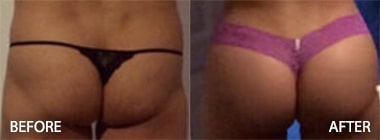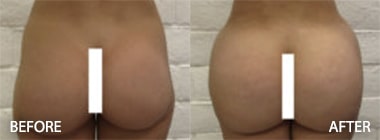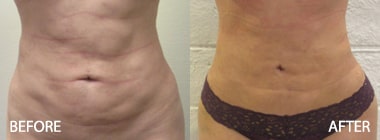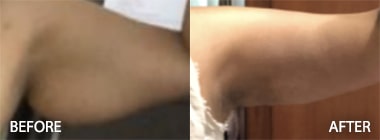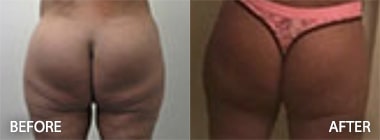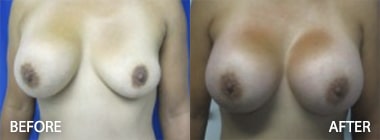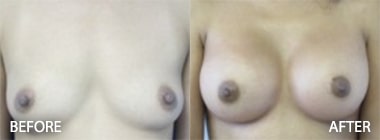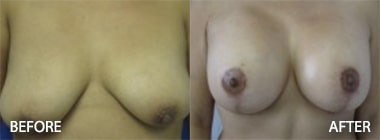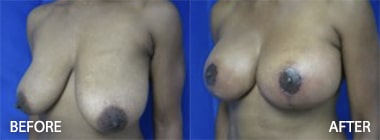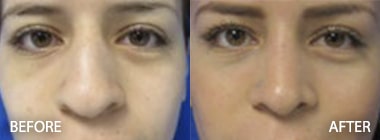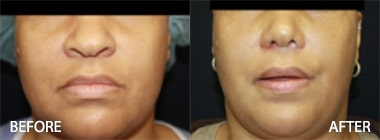Certainly, a poor result can disappoint plastic surgeons and patients alike. However, it is important to understand that less than optimal results secondary to a recognized complication or unappreciated initial anatomic constraints are as much a part of surgery as are optimal outcomes with favorable starting anatomy.
Every patient is different in regard to skin color, healing characteristics, proportions, intrinsic tissue strength, and the list continues. One person’s starting point portends tremendous outcome while another portends less than optimal outcome.
For example, it is very common in liposuction procedures for patients to have very different underlying musculoskeletal structure as well as varying amounts and distributions of subcutaneous tissues or fat. Liposuction never really improves skin and only acts to reduce fatty deposits, and liposuction can certainly not alter the underlying musculoskeletal structure or improve the skin. Thus, a patient who has an underlying 23 inch waist and 2 inches of circumferential fat will be able to obtain a much better and more dramatic improvement than an individual with only 1 inch of circumferential fat but an underlying 28 inch waist. Evaluating and understanding of the amount of subcutaneous fat in each patient is critical to determining the result that can be achieved and whether a patient’s goals are realistic or not.
Similarly, a person with larger hips who only has liposuction of the waist may have a far better result than a more square individual who has both liposuction of the waist and fat transfer to the hips.
Another classic example is the difference in skin laxity among different patients. Each patient may think that her skin quality is identical to the skin of a friend or family member who had great results with liposuction. With a few exceptions to be sure, a woman who has undergone pregnancy usually has changes in skin elasticity – some, subtle; some, more noticeable. The skin is rendered less resilient by the changes that occur during pregnancy and the postpartum period. In addition, some patients have lost a substantial amount of weight, and the skin has been damaged as a result of the initial weight gain. Finally, some patients have loose skin from a genetic or environmental reason. These changes in skin quality definitely alter the outcomes of liposuction, and all patients should recognize these elements prior to surgery.
Therefore, it is only reasonable or easily deduced that the final result following liposuction is a combination of the surgery itself, the starting point, and the healing process. If the healing process is less than optimal, some of the starting point issues can play a more significant role. The job of a plastic surgeon is not as easy as that of a tailor, wherein the finished product is static and unchanging without a healing period to obfuscate the underlying monolithic talent of the surgeon. Dr. Kenneth Hughes of Hughes Plastic Surgery will achieve the best liposuction result on the table, but any result created is subject to change during recovery.
A sculptor crafts a sculpture, a painter creates a painting, and people marvel at the talent, but there is much more to this in surgery, particularly in cosmetic plastic surgery. Dr. Kenneth Hughes, Los Angeles plastic surgeon, cannot tell you how many times he has performed what he thought to be the finest breast lift, or thigh lift, or tummy tuck, or liposuction only to have the result altered during the postoperative period. Patients can generate fluid collections, which can totally ruin a liposuction result. Patients can further compound the issue by not following up to have the fluid collection drained. These poor results are entirely the fault of the patient and not the result of medical malpractice, negligence, or anything close. It is also interesting to note that the patients who yell the loudest or cry foul the most vehemently are almost always the same ones who are non-compliant.
It is critical for patients to realize that a thigh lift can only be executed in perfect fashion, with perfect planes dissected with perfect hemostasis, optimal tissue removal, and optimal three layer closure of the wound. That is all a surgeon can do and that is how a surgeon should be judged. That is why Dr. Kenneth Hughes takes video snippets at critical junctures of the procedure and at the completion of each surgical procedure – so that there is no doubt in anyone’s mind what was achieved or accomplished on that day in the operating room. This has become necessary due to the increasingly litigious patient population who seeks monies irrespective of the surgical result or outcome. Extortion is more common that anyone thinks, and malpractice lawsuits or threats thereof are utilized frequently to try to get a refund for a well performed procedure.
It would be foolish for someone to believe that an individual so intellectually and technically accomplished, who was trained for 30 years at the finest institutions on the planet, and who has performed thousands of procedures would not produce the best results as a matter of rule. Questioning an individual of this ilk about his craft is both intellectually laughable and shamefully arrogant on the part of the patient, family members, lawyers, and others.
Dr. Kenneth Hughes has patients who will come into the office and show him an incision that has opened despite three layers of suture and ask Dr. Hughes what he did incorrectly. This always makes for such a pleasant day and is followed by a postoperative period wherein the doubt on the part of the patient continues as it is inconceivable that the doctor actually got it right. Sometimes, complications just occur and it is no one’s fault. Indeed, sometimes it is the fault of the patient. In a basic and simplified sense, surgeons remove tissue and put part A back to part B with stitches or sutures until the area put back together can heal. If the sutures are pulled apart or pulled out due to too much tension created due to strenuous activity, or poor positioning, or unwise wound care of the healing tissue, then this will lead to a sub-optimal result. Dr. Kenneth Hughes often says to patients that he will get it right on the table, but the patient must preserve the result.
Dr. Kenneth Hughes puts every ounce of himself into obtaining that pristine surgical result. He makes himself available to patients on nights, weekends, and holidays by email and cell phone so that no one can make the excuse that Dr. Hughes was not able to be contacted. If a patient has a problem, Dr. Kenneth Hughes wants to know about it so that he can intervene as quickly and precisely as possible. Sometimes there is nothing wrong, and a patient will perseverate. Sometimes patients will have an issue and neglect to contact the surgeon. Always let the surgeon know as problems may not be obvious to the uninitiated or untrained eye.
To learn more about Kenneth Hughes, Harvard-trained, board-certified plastic surgeon in Los Angeles, please visit
https://www.hughesplasticsurgery.com/los-angeles-kenneth-hughes/
To see before and after photos of Kenneth Hughes, please visit https://www.hughesplasticsurgery.com/los-angeles-before-after-photos/
To contact Kenneth Hughes’s office, please visit
https://www.hughesplasticsurgery.com/contact-los-angeles-plastic-surgeon/
